Electric Fence Maintenance & Post Spacing
Electric Fence Maintenance
The most important time for maintenance and upkeep of an electric is the first week. This is due to the fact that electric fencing works on the ability of the animals to learn. Once they associate touching the fence with an unpleasant shock they will know to avoid it in future. This being the case, it is recommended that in the first week you inspect the fence daily to ensure it is working well. This is so the animals are more likely to receive a shock during the initial learning period. After this you should only need to check the fence once every week or so.
Each time you inspect the fence you should check:
- The connection between the energiser and electric fence.
- The connection between the energiser and the battery (or mains supply). Look for any signs of corrosion or animal interference.
- The connection between the earth rod and the energiser.
- You should walk the length of the fence looking for signs of damage to insulators or ‘arcing’ which could indicate a breakdown of insulation. Other ways of checking for ‘arcing’ would be to listen for a regular click or in low light you may see sparks while the energiser is on.
- Use a fence tester or voltmeter to check the pulse at each end of the electric fence, and on each conductor wire on multi-wire fences.
- In the use of electrified netting you should check the horizontal wire at approximately 100m intervals, and also the connections between separate rolls of netting.
- Finally you need to keep control of weeds and any vegetation as contact with the fence can cause leaks that will reduce the voltage.
Fence Load
Any electric fence can have a number of factors that can cause the diversion or impediment of the flow of electricity. The most common term for these factors is the ‘fence load’.
Of all the factors that can cause a high fence load the most common is vegetation touching the electric fencing. This has the effect of drawing current away and causes the available power to be reduced to the point that the animal may not be given an effective shock. This is why it is essential that any excess vegetation is controlled.
Other contributions to the fence load that you will need to check for are:
- The power of the energiser not being adequate for the fence length
- Broken or drooping wire
- Inadequate earthing for the fence
- Poor connections or rusting wire
- Cracked, damaged or poor quality insulators
Other consideration that you must take with electric fences is that any of the above problems will be magnified in wet weather. This can lead to all the electricity from the energiser leaking, or being unable to flow through the fence. The term for this is ‘shorting out’.
Electric Fence Post Spacing
The number of lines in your electric fence and your electric fence spacing depends on the size and agility of the animals you want to contain or deter. Small and nimble species like rabbits, for instance, need more lines than larger, less agile animals like cattle or horses. You need sufficient lines carefully positioned to maximise contact with an animal’s sensitive nose, and to ensure it can’t dodge underneath or jump over the electric fence.
Below are a series of guides explaining wire heights and post spacings for various animals, for both temporary and permanent electric fencing. We have also included information on the best kinds of wire to use.
Sheep
Sheep, being naturally well insulated, need multiple lines to ensure they get a shock where they can actually feel it. Three lines is normal for temporary electric fencing; five lines provide more security for permanent electric fences. In the five-wire fence, don’t energise the bottom wire or growing vegetation will cause shorting. The bottom wire is designed to stop animals slipping underneath the fence.
Temporary Electric Fencing spacing for Sheep
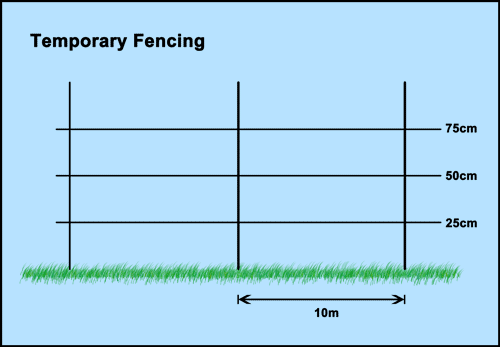
Stranded steel or polywire with polystakes or steel stakes
Permanent Electric Fencing spacing for Sheep
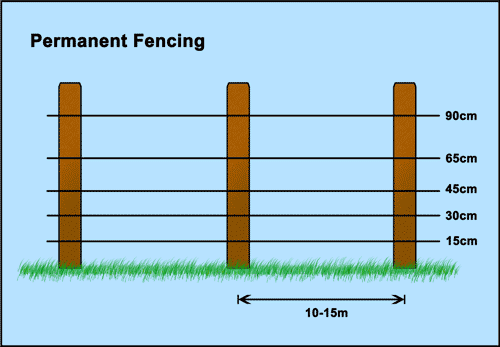
High tensile steel wire with timber posts
Cattle
Cattle are very sensitive to electric fencing, so you can get away with a single line at around 90cm from the ground when strip-grazing dairy cows. However, for herds containing young calves, you will need two lines.
Temporary Electric Fencing spacing for Cattle
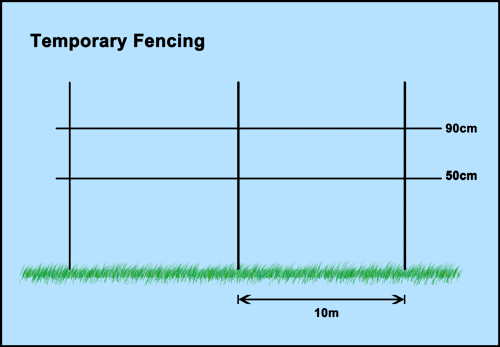
Stranded steel wire or polywire with steel or spring steel pigtail stakes
Permanent Electric Fencing for Cattle
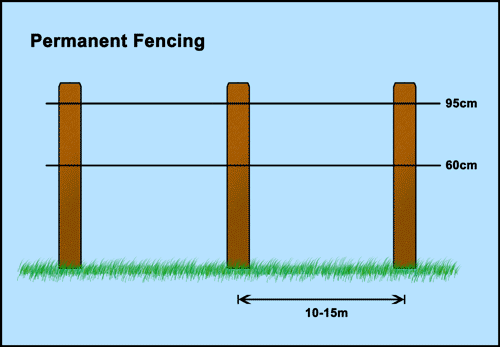
High tensile steel wire with timber posts
Pigs
Pigs, including boars, are very sensitive to electric fencing, and can be effectively controlled with just two lines of wire. However, you’ll need three lines for piglets, and to separate boars in adjacent paddocks.
Note: This is not a fox-proof fence. To protect piglets from predators see our Poultry/Fox Fencing option
Temporary Electric Fencing for Pigs

Stranded steel wire with timber or steel posts
Poultry/Fox
Electric netting is the best temporary option for protecting poultry and piglets and keeping foxes at bay.
Temporary Electric Fencing for Poultry
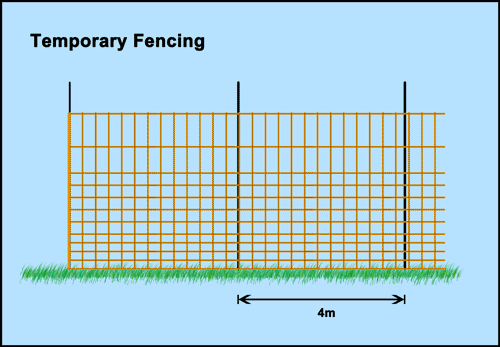
Permanent Electric Fencing for Poultry
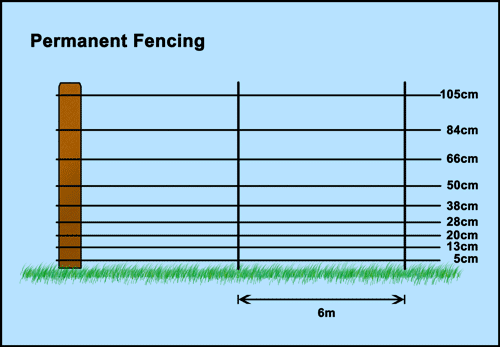
Stranded steel or high tensile steel wire with timber or steel posts
Rabbits
Rabbits, being small and low to the ground, with the ability to both dig or jump, can be difficult to fence. While electrified rabbit netting is suitable for small areas, a four or six-line electric fence will deter them across longer runs. For permanent electric rabbit fencing you will need a section of wire mesh buried down 30 cm into the ground to deter rabbits from digging their way under the fence. The two electric wires will stop them climbing over.
Click here for More information regarding Electric fence spacing
